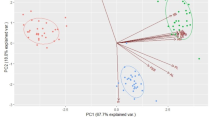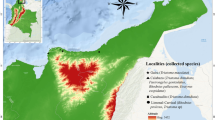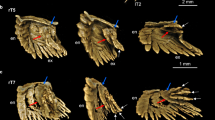Abstract
MITES of the family Trombiculidæ include the European harvest-mites and many other notorious scrub-itch mites, as well as the vector of scrub typhus. A closely related group, the Leeuwenhoekiidæ, has also been given familial status1, both these families having been split off from the Trombidiidæ. Trombidiid and leeuwenhoekiid adults are superficially alike; but adult trombiculids are easily distinguished by being constricted to a figure of eight. The nymphal and adult stages of all three groups are non-parasitic, so far as is known; but the larvæ collectively appear to be the most numerous of all acarine ectoparasites in the tropics. Larval trombidiids are common parasites of insects, while leeuwenhoekiid larvæ have been found parasitizing mammals, birds, reptiles, amphibia, and, more recently, arthropods2. That the trombiculid larvæ (‘chiggers’) parasitize only vertebrate hosts is, however, generally accepted as part of the definition of that family3. The following records of three species of trombiculids parasitizing arthropods in Malaya are therefore of considerable interest, and it is hoped that this note may stimulate more attention to this unexpected source.
Similar content being viewed by others
Article PDF
References
Womersley, H., Trans. Roy. Soc. S. Austral., 69, 96 (1945).
Radford, C. D., Parasitology, 37, 46 (1946).
Ewing, H. E., J. Parasitol., 30, 339 (1944).
Walch, E. W., Trans. Fifth Cong. Far East Asian Trop. Med., 1923, 593 (1924).
Womersley, H., and Heaslip W. G., Trans. Roy. Soc. S. Austral., 67, 91 (1943).
Kohls, G. M., Armbrust, C. A., Irons, E. N., and Philip, C. B., Amer. J. Hyg., 41, 381 (1945).
Author information
Authors and Affiliations
Rights and permissions
About this article
Cite this article
AUDY, J. Occurrence of Trombiculid Mites on Arthropods. Nature 165, 193 (1950). https://doi.org/10.1038/165193a0
Issue date:
DOI: https://doi.org/10.1038/165193a0
This article is cited by
-
Seismology in Great Britain, 1949–50
Nature (1951)
-
Recent Irish Records of Rare Fish
Nature (1950)



